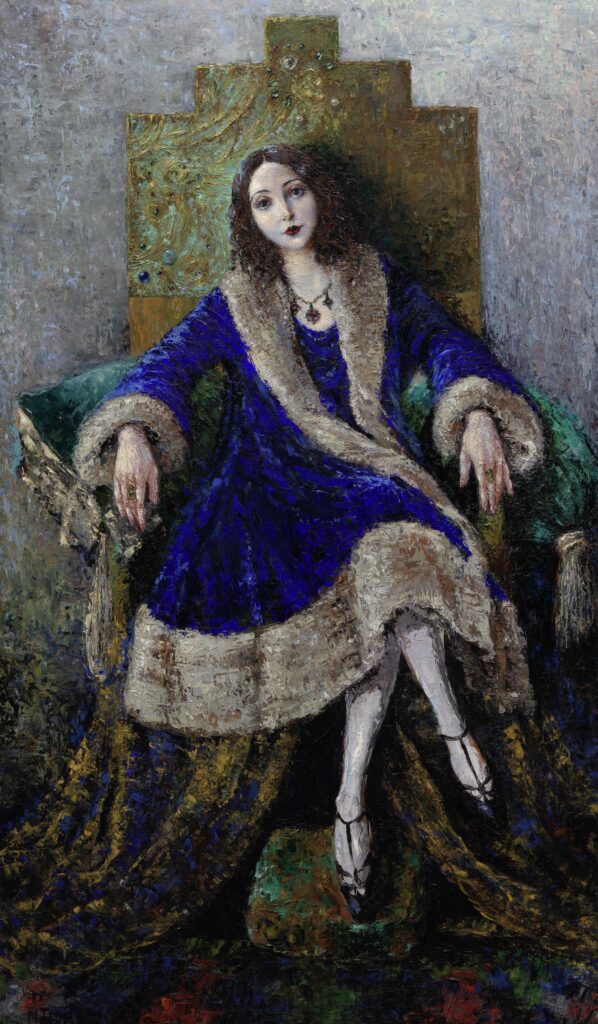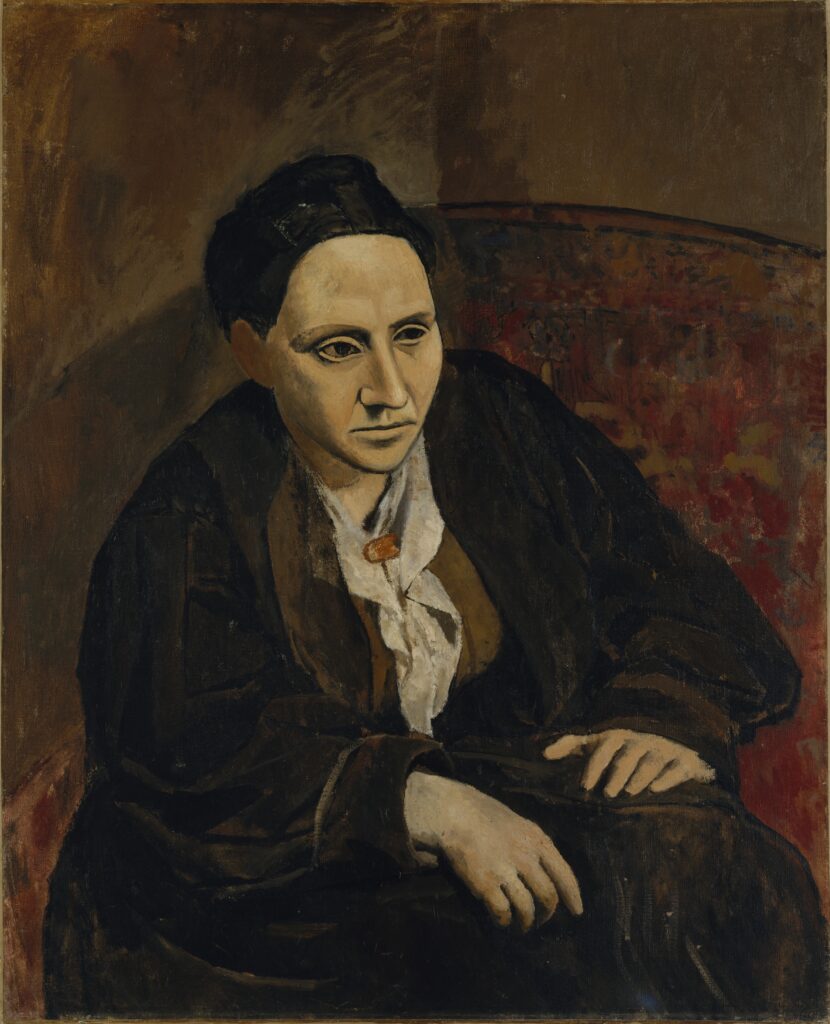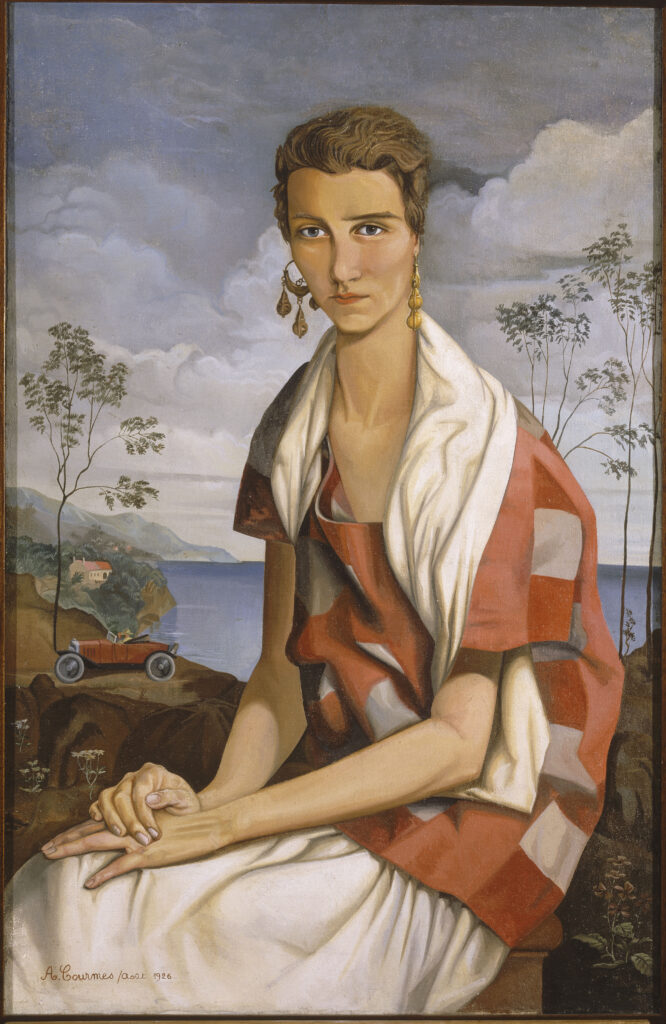‘Brilliant Exiles,’ in a Scoop of Curation, Celebrates the Glory of American Women at the City of Light
The show at the National Portrait Gallery resembles an impossibly chic cocktail party or a scintillating salon, going strong in the afterlife.

‘Brilliant Exiles: American Women in Paris, 1900–1939’
The National Portrait Gallery at the Smithsonian Institution
8th and G Streets NW, District of Columbia
Through February 23, 2025
Few milieus exert as enduring a hold on the popular imagination as Paris in the first decades of the last century. There, Ernest Hemingway and F. Scott Fitzgerald took stabs at the Great American Novel, Man Ray took pictures, Cole Porter scribbled songs, and Pablo Picasso dreamed of guitars cobbled from cubes. You won’t find any of these geniuses, though, at the new show at the National Portrait Gallery. It’s a world of women.
“Brilliant Exiles: American Women in Paris, 1900–1939” is, in a scoop of curation, the first exhibition to “focus on the impact of American women on Paris — and of Paris on American women — between the turn of the 20th century and the outbreak of World War II.” It spotlights more than 60 women across 80 works of art. Curated by Robyn Asleson, the show resembles an impossibly chic cocktail party or a scintillating salon, going strong in the afterlife.
Some subjects will be familiar. Here hangs Picasso’s portraits of the writer Gertrude Stein and her partner Alice Toklas, whose home became a locus of the avant-garde. Stein is solid and imposing, possessing a stubborn opacity shared by her writing, which is frequently impenetrable. Close by is her sister-in-law, Sarah Samuels Stein, painted by Henri Matisse, of whom she was a patron. Where Getrude is seen from a distance, Sarah nearly leaps from the canvas.

Many of these women loved other women, and one of the joys of the show lies in learning how a pursuit of authentic desires in the private sphere accompanied revolution in art and culture that still feels modern and fresh a century later. On loan from Princeton is a charismatic portrait by Paul-Emile Bécat of Sylvia Beach, handkerchiefed and curly haired. Beach, a lesbian, ran Shakespeare and Company. Without her, there would be no “Ulysses.”
The same could be said of the editor Jane Heap, here captured in watercolor by Pavel Fyodoritch Tchelitchew. She and her lover Margaret Anderson co-founded the Little Review, in whose pages were published the poets Hart Crane, William Butler Yeats, and T.S. Eliot, and the artists André Breton and Marcel Duchamp. The United States Postal Service seized and burned four issues for peddling obscenity in the form of James Joyce’s masterpiece.

A highlight of the exhibit is Natashia Troubetskoia’s portrait of Anaïs Nin, regally seated on what looks like a throne and draped in a blue coat that dwarfs her thin frame but throws into sharp relief her arresting face. Her diaries, composed over six decades, are a touchstone of female erotica. Also seductive is William Zorach’s ink-and-charcoal drawing of the poet Edna St. Vincent Millay, the first woman to win a Pulitzer for verse.
Not everyone worked with words. Paul Colin’s lithograph of Josephine Baker conveys her muscles and majesty, the way this dancer was fetishized and idolized as an avatar of the Jazz Age. Her revues at Folies Bergère, where she was wont to dance in a short skirt stitched together from artificial bananas, were a sensation. The first Black woman to star in a major motion picture, she had an allure burnished by liaisons with the writer Colette and the artist Frida Kahlo.

A showstopper is “Ballerinas,” a canvas from 1933 by Zelda Fitzgerald. The two dancers are elongated, almost gargantuan, with their legs resembling stilts. Peggy Guggenheim is represented by both a Man Ray photograph and a vivid painting by Alfred Courmes so lifelike that one can imagine a bead of sweat on her forearm. “Gertrude Vanderbilt Whitney in Bakst Costume with Fleurs de Mal,” from 1911, exudes glamor and sophistication.
A more melancholy tone is struck in Polly Thayer Starr’s portrait of the writer May Sarton, from 1936. Sarton’s pale face is exquisite, but the painting’s black and blues convey something of the night time or the underwater, a spectrum of sadness. Just four years later, France would fall to the Nazis. The Jews, the modernists, the lesbians, and many others would all come to fear for their lives.

